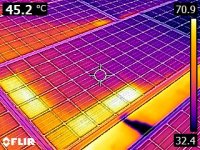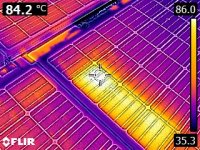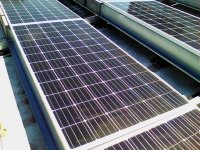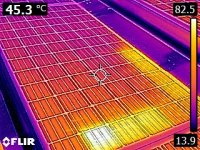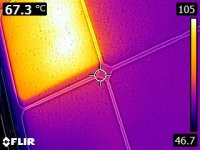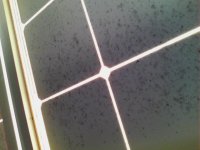Paco Solar
Member, NABCEP Installer
- Location
- Southeastern PA
- Occupation
- Solar Engineer (PE)
I recently took an Infra-Red photo of a PV module, on a commercial roof, with a few cells that are overheating.
The IR photo shows the cell temperature to be about 186* F, which is about 80*F above the adjacent cells.
My question: Is this a dangerous cell temperature such that this system should immediately be shut down,
or is this in the category of a clear problem that should be scheduled for replacement.
Thank you,
Paco
The IR photo shows the cell temperature to be about 186* F, which is about 80*F above the adjacent cells.
My question: Is this a dangerous cell temperature such that this system should immediately be shut down,
or is this in the category of a clear problem that should be scheduled for replacement.
Thank you,
Paco


